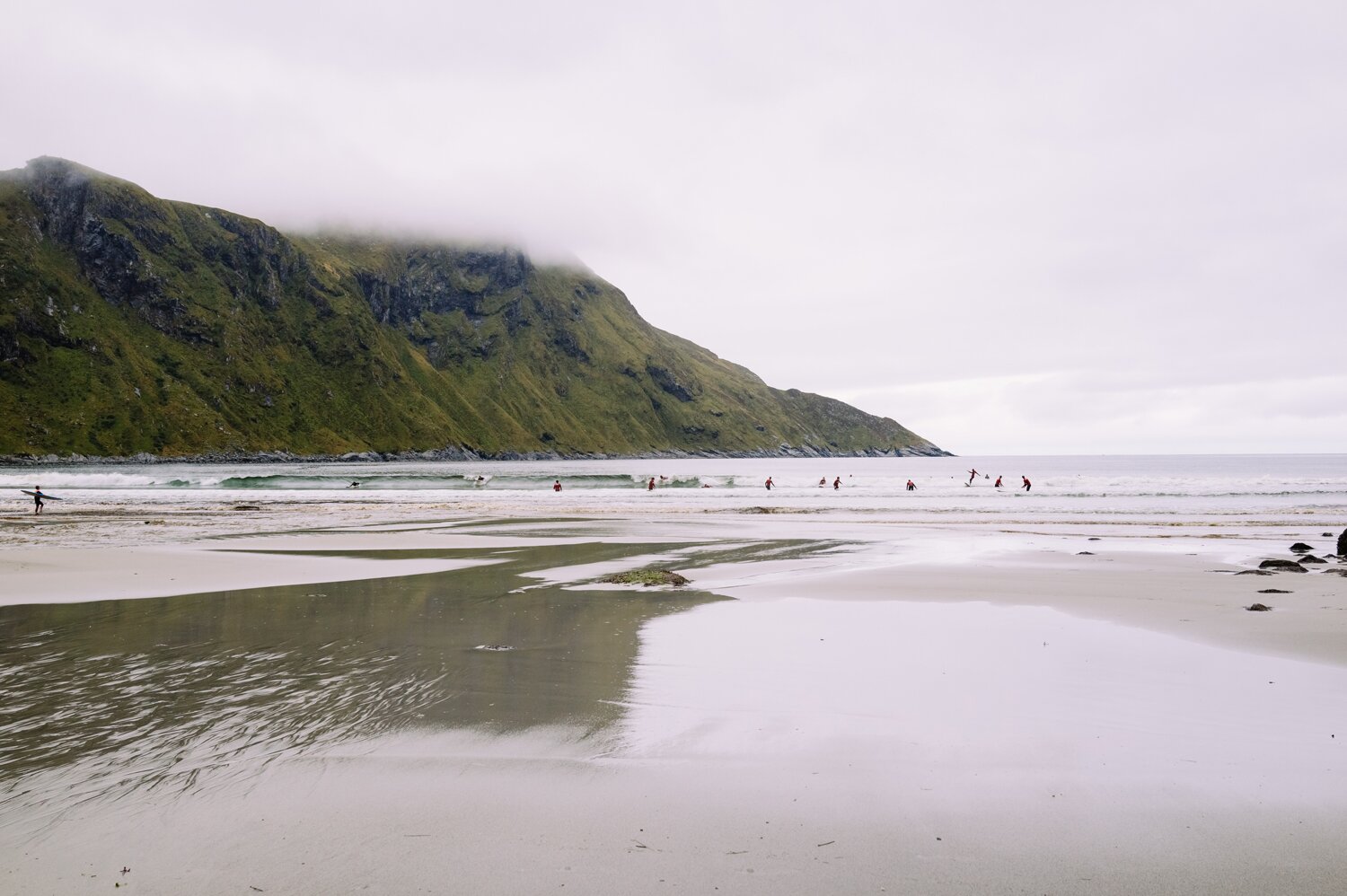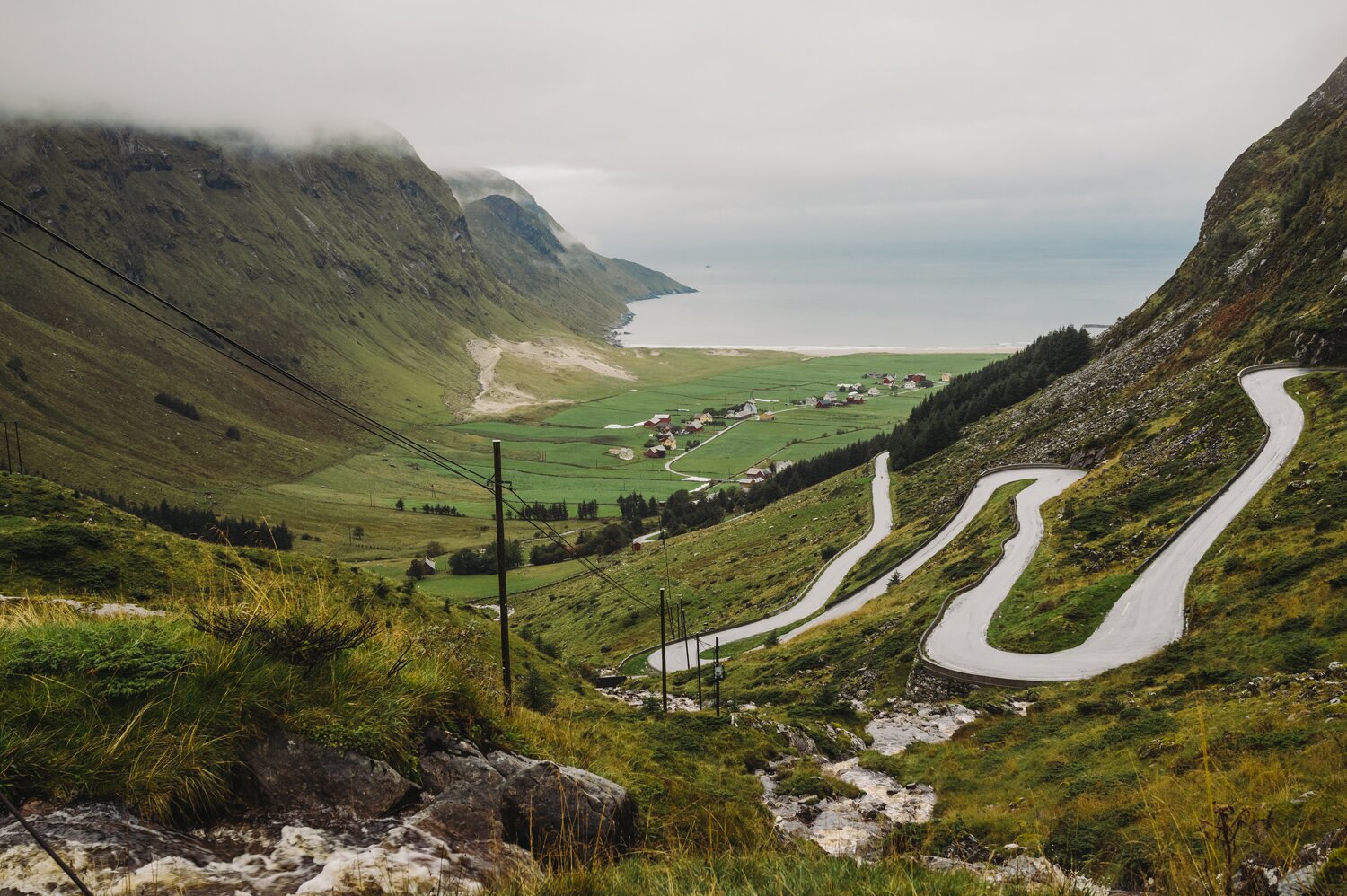A surfers’ paradise for those in the know, the isolated peninsula of Stadlandet in western Norway is attracting young creatives from around the world. They might have come for the waves, but in the process the new residents of Stadlandet have formed a close-knit community, with a surprisingly entrepreneurial spirit.
Smack in the middle of the winding road, surrounded by pines trees on both sides, a soaking wet black sheep is standing firm, facing our approaching vehicle with a mixed look of mild disdain and utter indifference, wool flattened by the rain and ears protruding comically. It’s my second day exploring Stadlandet, or Stad, a small peninsula in western Norway, and unlike the postcard-sunny weather of my arrival, a torrential downpour has engulfed mountaintops and forests in a grey blanket of clouds resembling the dreaded ‘nothing’ of The Never Ending Story. In keeping with this fairy tale setting, the aforementioned sheep seems to have taken it upon itself to act as the guardian of the mountain pass. The car slows as woman and woolly creature face off in between the rhythmic pace of the wiper blades. “Look at that silly thing pretending to be Gandalf,” laughs German artist and weaver Karina Siegmund in the driver seat, raising her voice over the incessant drumming of huge raindrops battering the car roof. A recent Stad transplant, Siegmund has graciously taken me on a tour of her natural ‘neighbourhood’, and we inch forward until only the head of the sheep is visible, still glaring at us over the hood. Finally, the animal budges and slowly moves out of the way, no doubt annoyed at this inconvenient interruption in middle of the raging elements.
Driving through Stad, free-grazing sheep, cows, goats and even ponies are aplenty, making navigating the already narrow roads tricky business. Even more so in bad weather, although accidents directly involving animals are actually fairly rare; more often it’s the humans who end up in a ditch, Siegmund tells me, in reference to a time she was driven off the road by another car anxious to avoid hitting a wee lamb.
If Stad’s four-legged jaywalkers don’t disrupt your concentration behind the wheel, there’s a good chance the incredible landscapes will. Come rain or shine, it’s tempting to pull over at every turn to take in the views of mysteriously dark mountain lakes (some as deep as the mountains are high, legends have it), scenic valleys with appropriately Lord of the Rings-sounding names such as Morkadalen (Darkness Valley), rugged peaks and steep cliffs tumbling into the ocean. It’s an area that deservedly draws comparisons with that natural jewel of Norway, the archipelago of Lofoten further north. But unlike Lofoten, Stad is surprisingly devoid of tourists and is a hidden gem for those in the know.
In recent years however, the area has begun to attract a curious mix of young international newcomers from the creative industries, like Siegmund. She settled here to be closer to nature – and namely, to surf. Unbeknownst to most outside of the surf world, Stad actually offers the best surf in Norway, with the wave activity centred in the two beautiful bays of Hoddevik and Ervik with their sandy beaches. During my trip to the area, I stay at Strandro (also referred to as Stad House), one of now three surf houses in Hoddevik, and quickly become enamoured with the strangely exotic sight of wetsuit-clad surfers skateboarding towards the beach, past quaint wooden houses and old barns.
The weather on the peninsula is notoriously fierce, Stad acts as a border between the North Sea and the Norwegian Sea. But thanks to tall mountains surrounding both Hoddevik and Ervik, the bays are sheltered from the worst of the howling storms and enjoy an almost constant swell all year round. Yet Stad’s growing reputation as a welcoming surfers’ paradise marks a sharp contrast to the way mariners have long spoken of the hazardous waters off this coast, fearing the strong currents and waves that can reach a monstrous 25-metres. There have been frequent shipwrecks throughout centuries, causing the Vikings to famously drag their ships over the mountains, rather than risk sailing around Stad. Today plans for an enormous ship tunnel going through the peninsula are well underway.
“It took some time for the locals to get used to surfers coming here and treating the sea as a playground. Historically, the people of Stad have been afraid of the water. All local families here know of someone who died at sea,” explains Jeff Roussel, the soft-spoken Californian manager and surf instructor of Strandro. “Now, more young local Norwegians are taking an interest in surfing, and the surf community has become an increasing part of everyday life at Stad,” says Roussel, adding jokingly that just a few years back, someone could have made a cracking reality TV series about the ‘drama in the valley’, as a few obstinate farmers took offence to the hoodie-wearing youths rolling up on the doorstep of their remote home.


